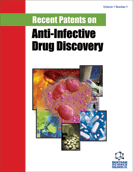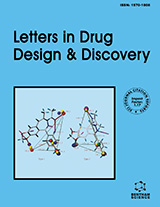Abstract
Extracellular adenosine 5-triphosphate (eATP) is an important mediator of cell-to-cell interactions in the nervous, vascular and immune system. Its low release by different cells, as mast cells, platelets, red blood cells, T cells and also by nerve terminals, requires different mechanisms and especially occurs in physiologic conditions. However, in pathologic conditions, as inflammation, eATP can highly increase, following its release by damaged cells. Elevated levels of eATP provoke the activation of some purinergic receptors, mainly the P2XR, which are located on mononuclear phagocytes, T cells and endothelial cells. The activation by eATP of inflammatory/immune cells leads to their release of some inflammatory mediators, such as the cytokines IL-1β and TNFα. These cytokines are able to further activate other cells, as endothelial cells, favouring their increased expression of adhesion molecules; such process enhances circulating cell recruitment to the inflamed tissue. The blockade of the purinergic-mediated activation of the inflammatory/immune cells might represent a useful tool to reduce the spreading of the inflammatory/immune response. This review will summarize the beneficial effects of the use of periodate oxidized ATP (oATP), an inhibitor of P2XR, in the treatment of some experimental models of inflammatory/immune diseases. The article is a short review of recent patents related to the anti-inflammatory/analgesic/antiangiogenic effects of oATP and to its role in the autoimmune diseases.
Keywords: Inflammation, autoimmunity, pain, extracellular ATP, oxidized ATP (oATP)
Recent Patents on Anti-Infective Drug Discovery
Title: A New Approach to the Inflammatory/Autoimmune Diseases
Volume: 4 Issue: 2
Author(s): Maria E. Ferrero
Affiliation:
Keywords: Inflammation, autoimmunity, pain, extracellular ATP, oxidized ATP (oATP)
Abstract: Extracellular adenosine 5-triphosphate (eATP) is an important mediator of cell-to-cell interactions in the nervous, vascular and immune system. Its low release by different cells, as mast cells, platelets, red blood cells, T cells and also by nerve terminals, requires different mechanisms and especially occurs in physiologic conditions. However, in pathologic conditions, as inflammation, eATP can highly increase, following its release by damaged cells. Elevated levels of eATP provoke the activation of some purinergic receptors, mainly the P2XR, which are located on mononuclear phagocytes, T cells and endothelial cells. The activation by eATP of inflammatory/immune cells leads to their release of some inflammatory mediators, such as the cytokines IL-1β and TNFα. These cytokines are able to further activate other cells, as endothelial cells, favouring their increased expression of adhesion molecules; such process enhances circulating cell recruitment to the inflamed tissue. The blockade of the purinergic-mediated activation of the inflammatory/immune cells might represent a useful tool to reduce the spreading of the inflammatory/immune response. This review will summarize the beneficial effects of the use of periodate oxidized ATP (oATP), an inhibitor of P2XR, in the treatment of some experimental models of inflammatory/immune diseases. The article is a short review of recent patents related to the anti-inflammatory/analgesic/antiangiogenic effects of oATP and to its role in the autoimmune diseases.
Export Options
About this article
Cite this article as:
Ferrero E. Maria, A New Approach to the Inflammatory/Autoimmune Diseases, Recent Patents on Anti-Infective Drug Discovery 2009; 4 (2) . https://dx.doi.org/10.2174/157489109788490343
| DOI https://dx.doi.org/10.2174/157489109788490343 |
Print ISSN 1574-891X |
| Publisher Name Bentham Science Publisher |
Online ISSN 2212-4071 |
 9
9Related Articles
-
Viral Infection - A Cure for Type 1 Diabetes?
Current Medicinal Chemistry Specific Immune Intervention with Monoclonal Antibodies for the Treatment of Multiple Sclerosis
Current Medicinal Chemistry Monoclonal Antibodies in the Treatment of Neuroimmunological Diseases
Current Pharmaceutical Design Sjogrens Syndrome and Lymphoma Development
Current Immunology Reviews (Discontinued) Mouse Models of Autoimmune Diseases: Immune Thrombocytopenia
Current Pharmaceutical Design Generation of Regulatory T Cells to Antigen Expressed in the Retina
Current Immunology Reviews (Discontinued) Epigenetic Regulation of Regulatory T Cells in Kidney Disease and Transplantation
Current Gene Therapy Inhibitors of the Enzyme Purine Nucleoside Phosphorylase as Potential Therapy for Psoriasis
Current Pharmaceutical Design Immune-Regulatory Mechanisms of Classical and Experimental Multiple Sclerosis Drugs: A Special Focus on Helminth-Derived Treatments
Current Medicinal Chemistry The Cancer Hygiene Hypothesis: From Theory to Therapeutic Helminths
Current Cancer Therapy Reviews Novel and Emerging Drugs for Systemic Lupus Erythematosus: Mechanism of Action and Therapeutic Activity
Current Medicinal Chemistry Experimental Models of Relapsing-Remitting Multiple Sclerosis: Current Concepts and Perspective
Current Neurovascular Research Targeted Therapies – Many Ways to (the Peace of) Rome
Immunology, Endocrine & Metabolic Agents in Medicinal Chemistry (Discontinued) Leukocyte Function-Associated Antigen-1: Structure, Function and Application Prospects
Protein & Peptide Letters Contribution of the Rho-kinase to Systemic Sclerosis and Behçet’s Disease
Current Pharmaceutical Design Crystallization and Preliminary X-Ray Studies of the Fab Fragment from a Humanized Version of the Mouse Anti-Human Fas Antibody Hfe7a
Protein & Peptide Letters Mucosal Healing in Ulcerative Colitis: Where do we Stand?
Current Drug Targets Paracoccidioides spp. and Histoplasma capsulatum: Current and New Perspectives for Diagnosis and Treatment
Current Topics in Medicinal Chemistry DNA Vaccines: A Mini Review
Recent Patents on DNA & Gene Sequences Osteopontin; as a Target Molecule for the Treatment of Inflammatory Diseases
Current Drug Targets






















